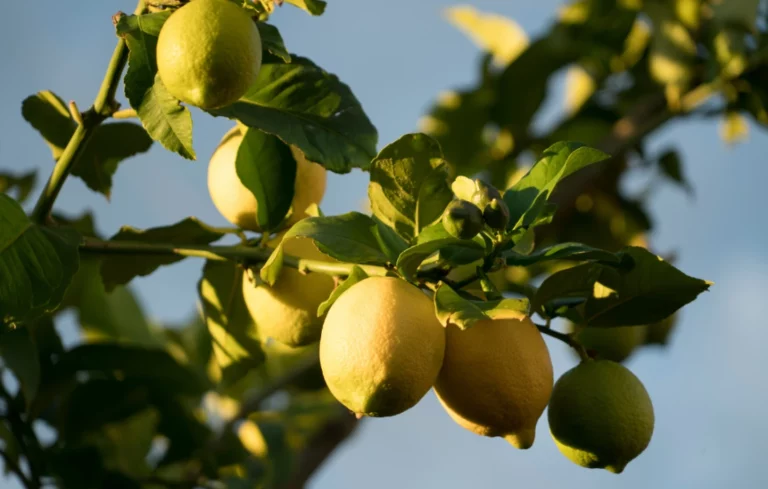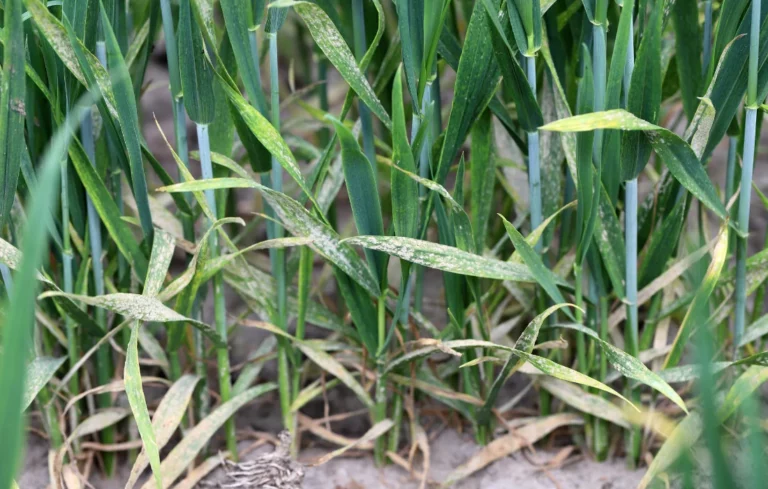Rye is a hardy cereal, valued for its ability to adapt to poor soils and harsh climates. Like all crops, it is susceptible to attacks from fungi, bacteria, and pests that weaken its growth and reduce its yield. Some diseases directly affect the ears, while others attack the leaves or roots, compromising the quality of the harvest. Understanding their origins, symptoms, and prevention methods allows for a safer and more sustainable agronomic strategy tailored to the needs of producers.
Rye ergot
Rye ergot is caused by Claviceps purpurea , a fungus of the Clavicipitaceae family . Rye is particularly susceptible because its open flowers and open pollination promote contamination.
The first signs are the appearance of droplets of honeydew on infected flowers. This sweet liquid attracts dust and pollen grains, giving the ears a “dirty” appearance. In the advanced stage, the grains are replaced by purplish-black sclerotia , visible to the naked eye. These elongated formations often protrude from the ear and are the distinctive sign of the disease.
The main danger lies in toxicity. The sclerotia contain alkaloids that cause serious poisoning. In humans, ergotism, formerly known as “St. Anthony’s fire,” has marked history with its epidemics, pain, and cases of gangrene. In animals, ingestion causes severe disorders and significant economic losses. In flour, contamination is invisible, requiring specific analyses.
Brown rust of rye
Brown rust is a fungal disease caused by Puccinia triticina , a basidiomycete fungus of the class Pucciniomycetes . It mainly affects wheat, barley and rye. It differs from other rusts in that it is Puccinia graminis (black rust) and Puccinia striiformis (yellow rust). Widespread in cereal-growing regions, it is one of the most common diseases of wheat, but also remains a concern for rye.
Yield losses can be as high as 20%. Grain quality is also affected, with a significant decrease in protein content.
The first symptoms appear in spring. Orange-brown to dark brown pustules measuring 0.5 to 1 mm are observed. They are mainly located on the upper leaves, but can also affect sheaths, stems and ears. Severe attacks cause light halos around the pustules and large necrotic areas. At the end of the cycle, the pustules turn black.
The disease develops when humidity is high and the temperature is between 15 and 20°C.
Need a natural solution for a rye disease?
Black rust of rye
Black rust is caused by Puccinia graminis f. sp. secalis . Its name comes from the orange pustules turning black at the end of the cycle.
Symptoms appear as elliptical swellings located along the veins of the leaf blade, on the leaf sheaths, culm, and sometimes floral bracts. The pustules are initially rounded, then elongate. They often coalesce, forming irregular streaks.
When the epidermis ruptures, it releases a brick-red dust . The surface of the attacked organs becomes rough, with a jagged appearance.
Attacks generally occur in early summer. Their late appearance limits the impact on yield, but the presence of the pathogen remains a factor in crop weakening.
Loose smut of rye
Loose smut belongs to the genus Ustilago , a group of seed-borne basidiomycete fungi. It is common on wheat, rye, barley, and oats.
Favorable conditions are temperatures between 16 and 22°C, combined with high humidity.
The disease remains invisible until ear emergence. The first sign is the appearance of blackened ears , where the grains are replaced by a powdery mass of olive-brown to black spores. After their dispersal, only the bare rachis remains.
Secondary symptoms may include yellow streaks on leaves, stunting, and stunted growth. Weakened roots result in limited tillering, reducing crop vigor.
Rye snow mold
Snow mold is caused by the fungus Microdochium nivale . It poses a major risk to rye seedlings. Contamination can come from infected seeds, but also from residues from previous crops. Wind and rain then contribute to its spread.
Seedling emergence is irregular and some seedlings show corkscrew-shaped deformations. A pinkish-white mycelium develops on the affected parts, sometimes accompanied by small brownish fruiting bodies. The disease can progress from the plants to the leaves and ears.
Its cycle begins in the fall. The fungus remains under the snow and persists throughout the winter. Symptoms remain visible until vegetation resumes in the spring.
Rye leaf spot
Rhynchosporium leaf spot is caused by Rhynchosporium secalis . Climate plays a key role. Temperatures between 10 and 20°C, prolonged humidity, frequent rainfall, and low light conditions favor its development. Regions with mild, humid climates are particularly prone to outbreaks.
The first signs appear on the leaves and sheaths. Small, pale, light green, oval spots form, edged with dark brown. They develop into larger lesions, often on the lower leaves. These lesions may coalesce and cause extensive necrotic areas. Chlorosis around the foci is common. At the end of the cycle, the spots turn white, dry out, and become brittle. When the infection reaches the leaf axils, the entire leaf blade may dry out.
Rye powdery mildew
Rye powdery mildew is caused by Erysiphe graminis f. sp. secalis, a fungus strictly adapted to this cereal. It is capable of causing significant damage in intensive cropping systems. High humidity favors the disease.
Cottony white patches appear on the upper surface of the leaves. They progress to a grayish tint, sometimes dotted with black spots. The infection often begins on the lower leaves and spreads evenly throughout the plot. In severe cases, it spreads to the stems and glumes.
Powdery mildew progresses rapidly in mild, humid conditions, making it a serious threat to rye in spring.
Agrobiotop solutions against rye diseases
Soil aeration
This action is very important because it plays a direct role in diseases.
Treatment for rye diseases (Physical barrier)
- CHITOPROTECT
- BENTOBIO (sodium bentonic clay)
In association with CHITOPROTECT :
- Cereal crops: 1kg BENTOBIO + 1 L of CHITOPROTECT /ha /100 L of water
- Market gardening: 3 kg BENTOBIO + 1.5 L of CHITOPROTECT / ha / 300 L of water
In association with PNPP : 1kg of BENTOBIO/100L of water increases the effectiveness of macerations (biostimulant)
Combination with Copper-based preparations : Dose of 1kg of BENTOBIO/100L of water
Bentobio dilutes perfectly in water and does not cause abrasion of pump systems.
The doses indicated should be adapted according to needs and objectives.
Dusting : From 8 to 15 kg/ha
Biostimulants
- YAKADOP (Recommended dose: 5 liters/100 liters of water/hectare)
- YAKAPRO (Recommended dose: 5 to 10 liters / 100 liters of water / hectare)
Seed coating
For protection against soil-borne fungal diseases.
Recommended dose for 100 kg of seeds, multiply the doses according to the volume of seeds
100 ml CHITOPROTECT + 900 ml YAKASEM /100 kg of seeds.
Do not hesitate to contact us for more information.





